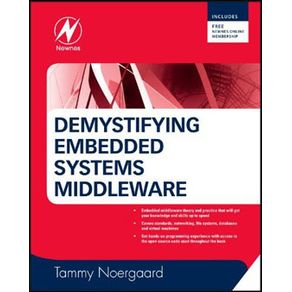When asked, "What is the biggest factor influencing processor choice for new projects?" engineers overwhelmingly agree that the robustness of the processors' attendant software is the key linchpin of the decision. Not speed, not price, but available software. Because software has become the driving factor in the development of embedded systems, middleware, the "glue" allowing hardware and software to work together effectively, has taken on a role of pivotal importance. However, middleware is perhaps the most mysterious of all the aspects of an embedded system, even to expert designers! Available information is scattered and mostly proprietary, not to mention largely outdated, and obfuscated by a sea of acronyms. This practical technical guide to embedded middleware implementation offers a coherent framework that guides readers through all the key concepts necessary to gain a clear understanding of this broad and diverse topic. Big picture theoretical discussion is integrated with down-to-earth advice on successful real-world use via step-by-step examples of each type of middleware implementation. Hundreds of diagrams help the reader to visualize the complexities of the wide variety of embedded middleware that exists in the industry today. Technically detailed case studies help to bring it all together, providing valuable insight into the typical engineering situations readers are likely to encounter. Expert author Tammy Noergaard keeps explanations as simple and readable as possible, eschewing jargon and carefully defining acronyms. The start of each chapter includes a 'setting the stage' section, so readers can take a step back and understand the context and applications of the information being provided.



